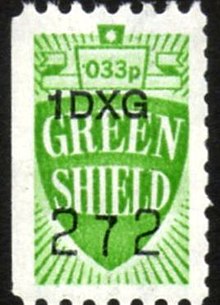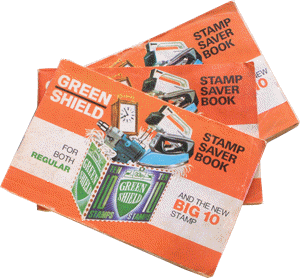
Richard Tompkins purchased the name Green Shield from a luggage manufacturer and founded Green Shield Trading Stamp Co in 1958, along similar lines to S&H Green Stamps. They were popular during the 1960s and 1970s. Competing trading stamp schemes included Pink Stamps (a UK operation of S & H Green Stamps), British Consumer Co-operatives dividend stamps, Blue Chip and the short-lived UK operation of King Korn.

Tesco founder Jack Cohen was an advocate of stamps; he signed up in 1963, shortly after his competitor Fine Fare adopted S&H Pink stamps and Tesco became one of the company’s largest clients. But Cohen was a fan of pile it high and sell it cheap, and in the mid-1970s faced cost problems associated with not integrating its stores. In 1977 Tesco launched Operation Checkout, price-cutting aimed at countering the new discounters such as Kwik Save. A decision was made to abandon Green Shield stamps, saving £20m a year and helping to finance price reductions.
In light of a price war, and higher prices where the stamps were sold, consumers prices were rising to cover costs - and as inflation was high, the value of the stamps was going down. As sales slowed and other retailers abandoned the scheme, Green Shield Stamp catalogue shops were rebranded Argos in July 1973. The company suspended sale of stamps in 1983, then had a short revival in 1987 involving 2,500 shops, finally ceasing in 1991

Very useful post, keep doing
ReplyDeleteloyalty stamp